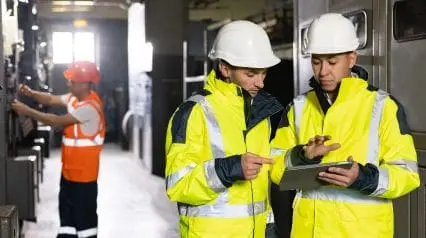What is the Purpose of an HVAC System?
The purpose of an HVAC (Heating, Ventilation, and Air Conditioning) system is to provide thermal comfort, maintain acceptable indoor air quality, and regulate humidity levels in enclosed spaces like residential and commercial buildings. HVAC systems achieve this by controlling the temperature, humidity, and purity of the air, ensuring that occupants are comfortable and the indoor environment is healthy.
What are the Main Components of an HVAC System?
The main components of an HVAC system include the following:
Heating Components
This component is responsible for generating heat to warm the air during colder months. Examples include:
- Furnace or Boiler: Provides heat by burning fuel or using electricity
- Heat Exchanger: Absorbs heat from the combustion process and warms the air
Cooling Components
Cooling components work in tandem to effectively cool and dehumidify the air within a space, ensuring comfort and indoor air quality. They consist of the following:
- Compressor: Compresses refrigerant, raising its temperature
- Condenser: Removes heat from the building and transfers it to the exterior, condensing the refrigerant into a liquid
- Evaporator Coil: Absorbs heat from the air as it passes over the cold coil, causing the refrigerant to evaporate
- Thermal Expansion Valve: Precisely controls the flow of liquid refrigerant into the evaporator coil, allowing it to expand and evaporate
Air Handling Components
This component ensures proper ventilation, air distribution, and filtration, contributing to comfort and indoor air quality. The following examples comprise this system:
- Air Handler: Circulates air through the system, including a blower, heating/cooling elements, and air filter
- Ductwork: Distributes conditioned air throughout the building
- Vents: Direct airflow from the ductwork into rooms
Control Components
These components ensure precise and efficient operation of the HVAC system, maintaining comfort and indoor air quality while minimizing energy consumption. Control components include:
- Thermostat: Monitors and controls indoor temperature, signaling the system to heat or cool as needed
- Contactors: Control the flow of electricity to the system components
- Relays: Regulate the timing of electrical circuits to optimize efficiency
- Sensors: Automatically detect changes in the environment or adjust the operation of the HVAC system accordingly to maintain desired conditions
Explore SafetyCulture Monitoring Solution
Utilize advanced sensor technology to monitor assets, automate vital alerts, implement actions, and report urgent issues.
Talk to an expertHow to Care for HVAC System Components
Maintaining HVAC components will help ensure that your facilities have reliable heating and cooling for years to come. Follow these practices to extend the lifespan of your HVAC system components:
- Regularly Replace Dirty Filters: Replace or clean air filters every one to two months to maintain optimal airflow and quality.
- Check and Lubricate Moving Parts: Inspect and lubricate moving parts like motors and bearings to ensure smooth operation.
- Clean Evaporator and Condenser Coils: Regularly clean evaporator and condenser coils to remove dust and debris, ensuring efficient heat exchange.
- Clean Drainage System: Keep the condensate drain line clear of clogs to prevent water backup and potential damage to the system.
- Check Filters and Ensure Secure Closure: Regularly check filters and ensure that doors are securely closed to prevent air leaks and maintain system efficiency.
- Inspect and Clean Ductwork: Regularly inspect and clean the ductwork to ensure proper airflow and prevent the buildup of dust and debris that can affect air quality and system efficiency.




